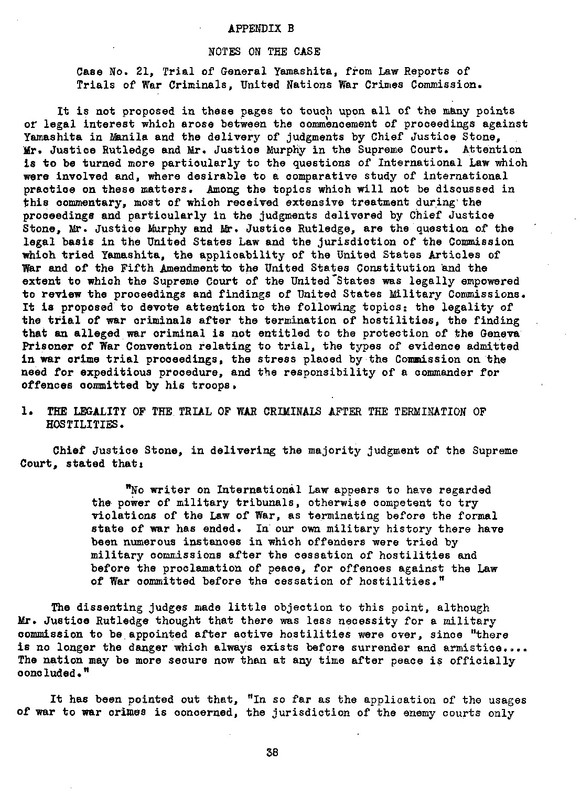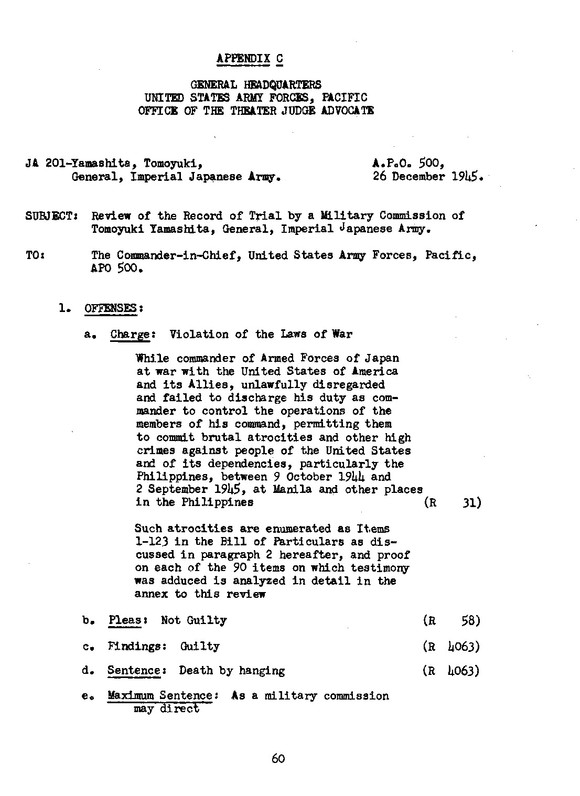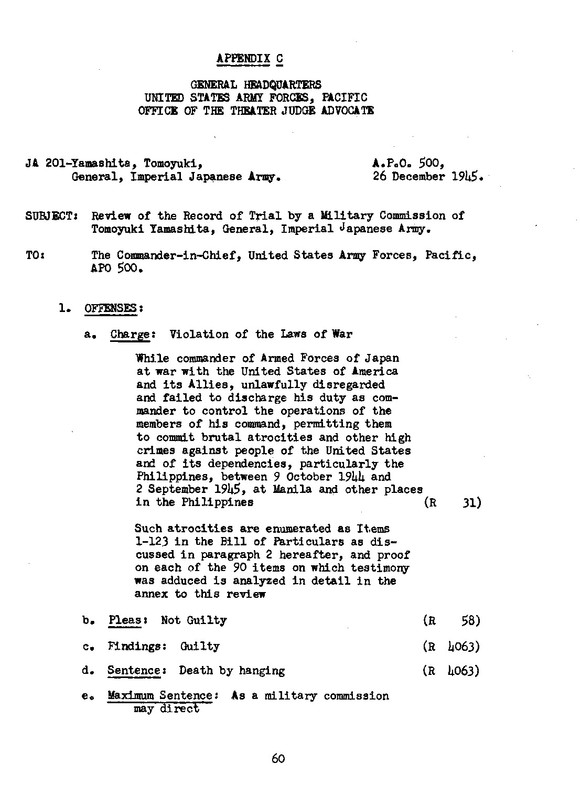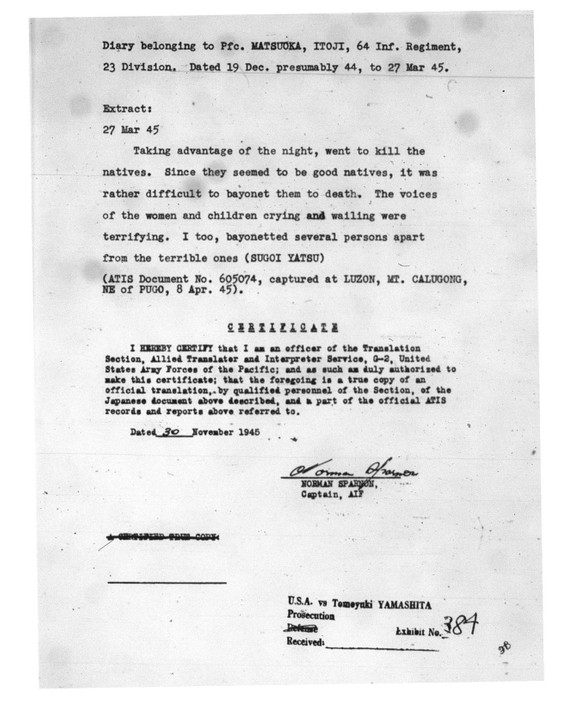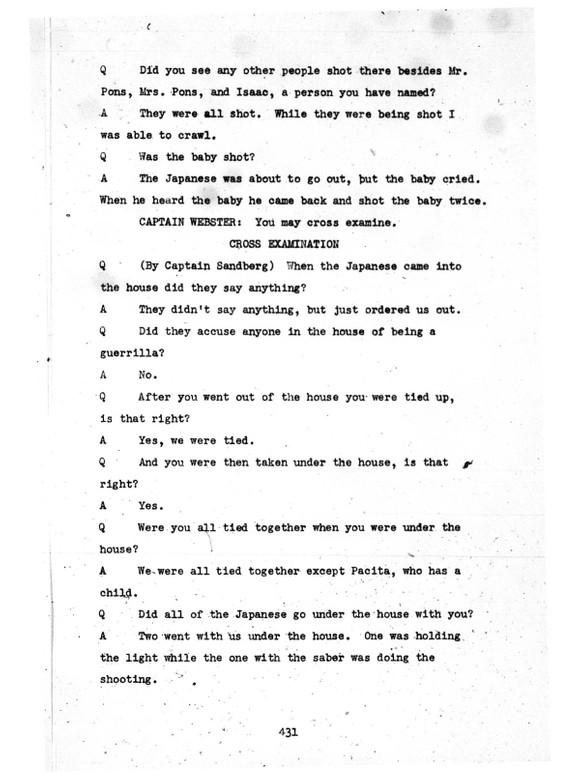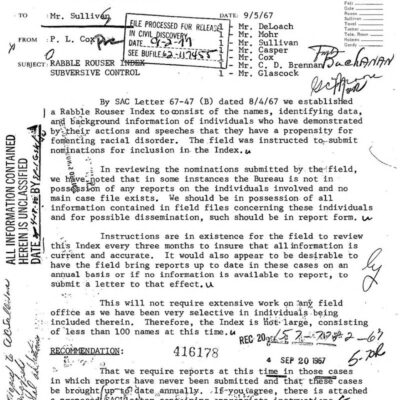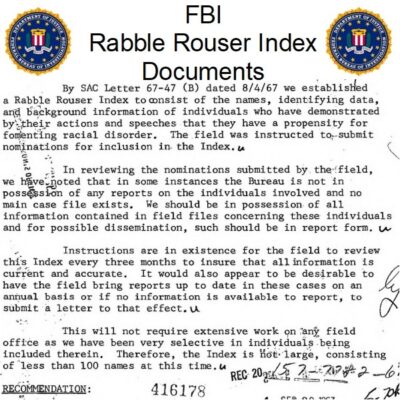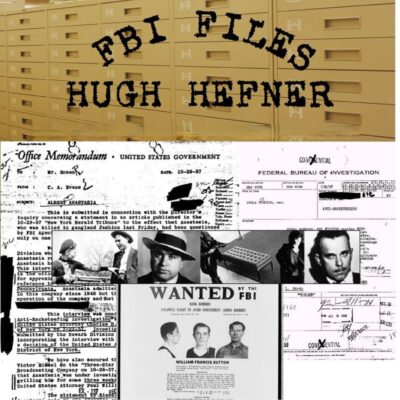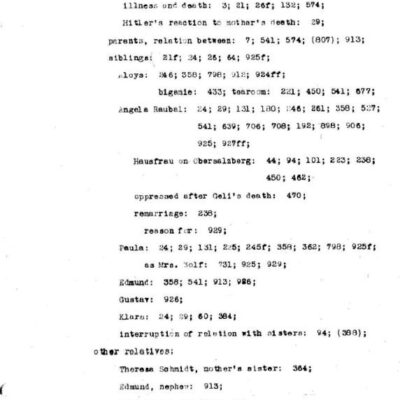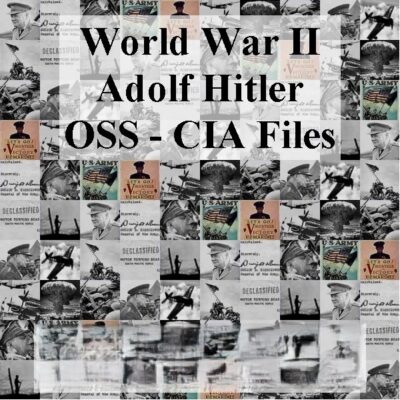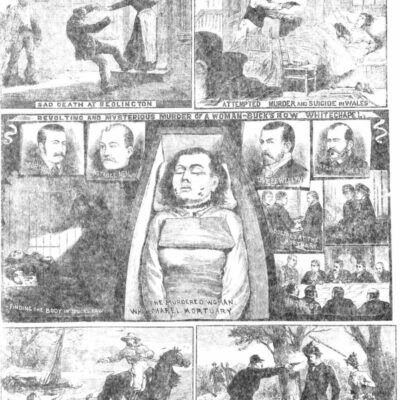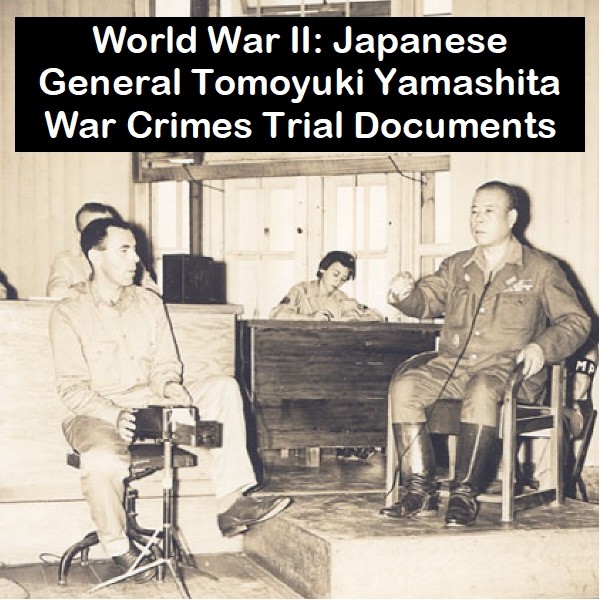
World War II: Japanese General Tomoyuki Yamashita War Crime Trial Documents
$19.50
Description
Yamashita’s Trial: Command Responsibility and World War II
Timeline of Main Events
- 1885: Tomoyuki Yamashita is born.
- World War II (Early Years): Tomoyuki Yamashita leads Japanese forces during the invasion of Malaya and the Battle of Singapore, achieving victory within 70 days.
- Later in World War II: Yamashita is assigned to defend the Philippines from advancing Allied forces. Despite being unable to stop the Allied advance, he holds onto part of Luzon.
- August 1945: Formal Surrender of Japan. Yamashita is still holding a part of Luzon at this time.
- Post-World War II: Yamashita is taken into custody.
- October 9, 1944 – September 2, 1945: The period during which Yamashita is charged with failing to control his troops in the Philippines, leading to atrocities.
- October 8, 1945: A military commission under the authority of General Douglas MacArthur begins the war crimes trial of General Tomoyuki Yamashita in Manila. The charge is that he unlawfully disregarded his duty as commander, permitting his troops to commit atrocities against people of the United States, its allies, and particularly the Philippines.
- Trial Proceedings (October – December 1945): The prosecution introduces 123 allegations of Yamashita’s violations of the laws of war. The commission hears from 286 persons and receives 423 exhibits.
- December 7, 1945: The military commission finds General Yamashita guilty as charged and sentences him to death by hanging.
- Post-Conviction (Late 1945 – Early 1946):Yamashita petitions the Supreme Court of the United States for writs of habeas corpus and prohibition.
- President Harry S. Truman rejects Yamashita’s plea for clemency.
- General Douglas MacArthur reviews the trial record and affirms the death sentence.
- February 4, 1946: The Supreme Court of the United States delivers its opinion (in re Yamashita, 327 U.S. 1) rejecting Yamashita’s petition. Chief Justice Harlan Fiske Stone delivers the opinion. The ruling establishes the “Yamashita standard” of command responsibility.
- February 23, 1946: General Tomoyuki Yamashita is executed by hanging.
- November 1949: U.S. Army Brigadier General Courtney Whitney writes “The Case of General Yamashita: A Memorandum” to refute arguments presented by Captain A. Frank Reel, one of Yamashita’s defense counsels, in an unpublished book. The memorandum defends the legality and fairness of Yamashita’s trial and execution.
Cast of Characters
- Tomoyuki Yamashita (1885 – 1946): A Japanese general of the Imperial Japanese Army during World War II. He led the successful invasions of Malaya and Singapore. Later in the war, he commanded Japanese forces defending the Philippines. After the war, he was tried and convicted by a U.S. military commission for war crimes committed by his troops in the Philippines and was subsequently executed.
- Douglas MacArthur (1880 – 1964): A five-star general in the United States Army and Field Marshal of the Philippine Army. As the Supreme Commander for the Allied Powers (SCAP) in occupied Japan after World War II, he authorized the military commission that tried Yamashita and ultimately affirmed his death sentence.
- Harlan Fiske Stone (1872 – 1946): The Chief Justice of the United States Supreme Court during Yamashita’s appeal. He delivered the Court’s opinion rejecting Yamashita’s petition for writs of habeas corpus and prohibition.
- Harry S. Truman (1884 – 1972): The President of the United States who rejected Yamashita’s plea for clemency.
- Courtney Whitney (1897 – 1969): A U.S. Army Brigadier General who served under General MacArthur. In 1949, he wrote a memorandum defending the trial and execution of General Yamashita against criticisms raised by one of Yamashita’s defense lawyers.
- A. Frank Reel: A captain in the U.S. Army who served as one of the six defense counsels for General Yamashita. He later wrote a book (unpublished at the time of Whitney’s memorandum) arguing that Yamashita was unfairly tried and unjustly executed.
- Judge Advocate General (United States Army): While not a specific individual named in the excerpts, the Judge Advocate General’s office reviewed the trial record of Yamashita. Their review concluded that the military commission was legally sound, had jurisdiction, the evidence supported the guilty verdict, no rights of the accused were violated, and the sentence was legal.
- United Nations War Crimes Commission: An international body that examined war crimes committed during World War II. They prepared a report on the trial of General Tomoyuki Yamashita, focusing on the questions of international law involved, such as the legality of post-hostilities trials, the applicability of the Geneva Prisoner of War Convention, evidence admissibility, procedural expediency, and command responsibility.
- 1885: Tomoyuki Yamashita is born.
- World War II (Early Years): Tomoyuki Yamashita leads Japanese forces during the invasion of Malaya and the Battle of Singapore, achieving victory within 70 days.
- Later in World War II: Yamashita is assigned to defend the Philippines from advancing Allied forces. Despite being unable to stop the Allied advance, he holds onto part of Luzon.
- August 1945: Formal Surrender of Japan. Yamashita is still holding a part of Luzon at this time.
- Post-World War II: Yamashita is taken into custody.
- October 9, 1944 – September 2, 1945: The period during which Yamashita is charged with failing to control his troops in the Philippines, leading to atrocities.
- October 8, 1945: A military commission under the authority of General Douglas MacArthur begins the war crimes trial of General Tomoyuki Yamashita in Manila. The charge is that he unlawfully disregarded his duty as commander, permitting his troops to commit atrocities against people of the United States, its allies, and particularly the Philippines.
- Trial Proceedings (October – December 1945): The prosecution introduces 123 allegations of Yamashita’s violations of the laws of war. The commission hears from 286 persons and receives 423 exhibits.
- December 7, 1945: The military commission finds General Yamashita guilty as charged and sentences him to death by hanging.
- Post-Conviction (Late 1945 – Early 1946):Yamashita petitions the Supreme Court of the United States for writs of habeas corpus and prohibition.
- President Harry S. Truman rejects Yamashita’s plea for clemency.
- General Douglas MacArthur reviews the trial record and affirms the death sentence.
- February 4, 1946: The Supreme Court of the United States delivers its opinion (in re Yamashita, 327 U.S. 1) rejecting Yamashita’s petition. Chief Justice Harlan Fiske Stone delivers the opinion. The ruling establishes the “Yamashita standard” of command responsibility.
- February 23, 1946: General Tomoyuki Yamashita is executed by hanging.
- November 1949: U.S. Army Brigadier General Courtney Whitney writes “The Case of General Yamashita: A Memorandum” to refute arguments presented by Captain A. Frank Reel, one of Yamashita’s defense counsels, in an unpublished book. The memorandum defends the legality and fairness of Yamashita’s trial and execution.
Cast of Characters
- Tomoyuki Yamashita (1885 – 1946): A Japanese general of the Imperial Japanese Army during World War II. He led the successful invasions of Malaya and Singapore. Later in the war, he commanded Japanese forces defending the Philippines. After the war, he was tried and convicted by a U.S. military commission for war crimes committed by his troops in the Philippines and was subsequently executed.
- Douglas MacArthur (1880 – 1964): A five-star general in the United States Army and Field Marshal of the Philippine Army. As the Supreme Commander for the Allied Powers (SCAP) in occupied Japan after World War II, he authorized the military commission that tried Yamashita and ultimately affirmed his death sentence.
- Harlan Fiske Stone (1872 – 1946): The Chief Justice of the United States Supreme Court during Yamashita’s appeal. He delivered the Court’s opinion rejecting Yamashita’s petition for writs of habeas corpus and prohibition.
- Harry S. Truman (1884 – 1972): The President of the United States who rejected Yamashita’s plea for clemency.
- Courtney Whitney (1897 – 1969): A U.S. Army Brigadier General who served under General MacArthur. In 1949, he wrote a memorandum defending the trial and execution of General Yamashita against criticisms raised by one of Yamashita’s defense lawyers.
- A. Frank Reel: A captain in the U.S. Army who served as one of the six defense counsels for General Yamashita. He later wrote a book (unpublished at the time of Whitney’s memorandum) arguing that Yamashita was unfairly tried and unjustly executed.
- Judge Advocate General (United States Army): While not a specific individual named in the excerpts, the Judge Advocate General’s office reviewed the trial record of Yamashita. Their review concluded that the military commission was legally sound, had jurisdiction, the evidence supported the guilty verdict, no rights of the accused were violated, and the sentence was legal.
- United Nations War Crimes Commission: An international body that examined war crimes committed during World War II. They prepared a report on the trial of General Tomoyuki Yamashita, focusing on the questions of international law involved, such as the legality of post-hostilities trials, the applicability of the Geneva Prisoner of War Convention, evidence admissibility, procedural expediency, and command responsibility.
World War II: Japanese General Tomoyuki Yamashita War Crime Trial Documents
5,742 pages of documents covering the war crimes trial of General Tomoyuki Yamashita.
Tomoyuki Yamashita (1885 – 1946) was a Japanese general of the Imperial Japanese Army during World War II. Yamashita led Japanese forces during the invasion of Malaya and Battle of Singapore, conquering Malaya and Singapore in 70 days. Yamashita was assigned to defend the Philippines from the advancing Allied forces later in the war, and while unable to stop the Allied advance, he was able to hold on to part of Luzon until after the formal Surrender of Japan in August 1945.
After the war, Yamashita was tried for war crimes committed by troops under his command during the Japanese defense of the occupied Philippines in 1944.
On October 8, 1945, a military commission, acting under authority from General Douglas MacArthur, began the trial of General Tomoyuki Yamashita on the charge that between October 9, 1944 and September 2, 1945, at Manila and at other places in the Philippine Islands, while a commander of the armed forces of Japan at war with the United States of America and its allies, he unlawfully disregarded and failed to discharge his duty as commander to control the operations of the members of his command, permitting them to commit brutal atrocities and other crimes against people of the United States and of its allies and dependencies, particularly the Philippines; and he, General Tomoyuki Yamashita, thereby violated the laws of war.
Two bills of particulars, consisting of 123 distinct paragraphs alleging Yamashita’s violations of the laws of war, were introduced into evidence by the prosecution.
On December 7, 1945, the fourth anniversary of the surprise attack on Pearl Harbor, the military commission found General Yamashita guilty as charged and sentenced him to death by hanging.
Yamashita petitioned the Supreme Court of the United States for writs of habeas corpus and prohibition. Yamashita was found guilty of his troops’ atrocities even though there was no evidence that he approved or even knew of them. The ruling against Yamashita, holding the commander responsible for subordinates’ war crimes as long as the commander did not attempt to discover and stop them from occurring, came to be known as the Yamashita standard.
The opinion of the Supreme Court, which rejected Yamashita’s petition, was delivered by Chief Justice Harlan Fiske Stone on February 4, 1946 (327 U.S. 1). President Harry S. Truman likewise rejected Yamashita’s plea for clemency. General MacArthur reviewed the record of trial and affirmed the death sentence recommended by the commission.
Yamashita was executed by hanging on February 23, 1946
This collection includes:
Trial Record
5,546 pages of the prepared trial record from the Military Commission convened by the Commanding General, United States Army Forces Western Pacific. The commission heard from 286 persons and received a total of 423 exhibits.
The Case of General Yamashita: A Memorandum by U.S. Army Brigadier General Courtney Whitney (1949)
This report contains an overview of the case, the decision of U.S. Supreme Court, notes on the case of General Yamashita and a review of the trial Record.
The Case of General Yamashita: A Memorandum was written in November 1949 by U.S. Army Brigadier General Courtney Whitney to refute the arguments presented in a book written, but not at that time published, by one of Yamashita’s six defense counsels, Captain A. Frank Reel. In support of its rebuttals to Reel’s book, the memorandum cites as authorities the Supreme Court opinion, In re Yamashita, 327 U.S. 1 (1946); the United Nations War Crimes Commission Law Reports of Trials of War Criminals; and the Judge Advocate review of the record of trial, all of which are included as appendices to the memorandum.
The memorandum takes exception to Capt. Reel’s use of the dissenting opinions in the Yamashita decision to “support his post-judicial contention that Yamashita was irregularly tried and unjustly executed.” It affirms the three major findings of the Court: the military commission which tried and convicted Yamashita was lawfully created and lawfully convened; the allegations of the charge against Yamashita adequately alleged a violation of the laws of war; and the regulations governing the procedures to be followed by the commission were not in conflict with the Articles of War and did not deprive Yamashita of due process. The memorandum notes that General MacArthur, who served as the final reviewing authority prior to ordering the execution of sentence, supported the majority opinion of the Court. The memorandum includes in its entirety General MacArthur’s statement of record enumerating his reasons for approving the military commission’s judgment.
The commentary written by the United Nations War Crimes Commission discusses at length the Yamashita decision, focusing on the questions of international law which were involved in that case. Specifically, this document addresses “the legality of the trial of war criminals after the termination of hostilities; the finding that an alleged war criminal is not entitled to the protection of the Geneva Prisoner of War Convention relating to trial; the types of evidence admitted in war crime trial proceedings; the stress placed by the Commission on the need for expeditious procedure; and the responsibility of a commander for offences committed by his troops.” The Memorandum finds the commentary’s “discussion of the validity of that part of the regulations governing the procedure to be followed by the military commission in the admissibility of evidence” to be of particular interest.
The memorandum provides a lengthy recitation of the “specifications to the charge on which Yamashita was tried, convicted, and executed,” and states that it “established a pattern of the … misconduct of the troops under Yamashita’s command.”
The memorandum also quotes extensively from the Judge Advocate General’s review of the trial record to illustrate “the voluminous evidence before the military commission pointing to full knowledge by the high command of this reign of terror instituted against non-combatants and prisoners over a wide area.” The Judge Advocate’s review of the trial concluded that the military commission was legally constituted and had jurisdiction of Yamashita and the offense with which he was charged. It also found that the evidence in that case supported the finding of guilty, that the trial record disclosed no errors in violation of the rights of the accused, and that the sentence was legal.
United Nations War Crimes Commission Law Reports of Trial of War Criminals, Volume IV, Trial of General Tomoyuki Yamashita
Report on the trial prepared by the United Nations War Crimes Commission.
